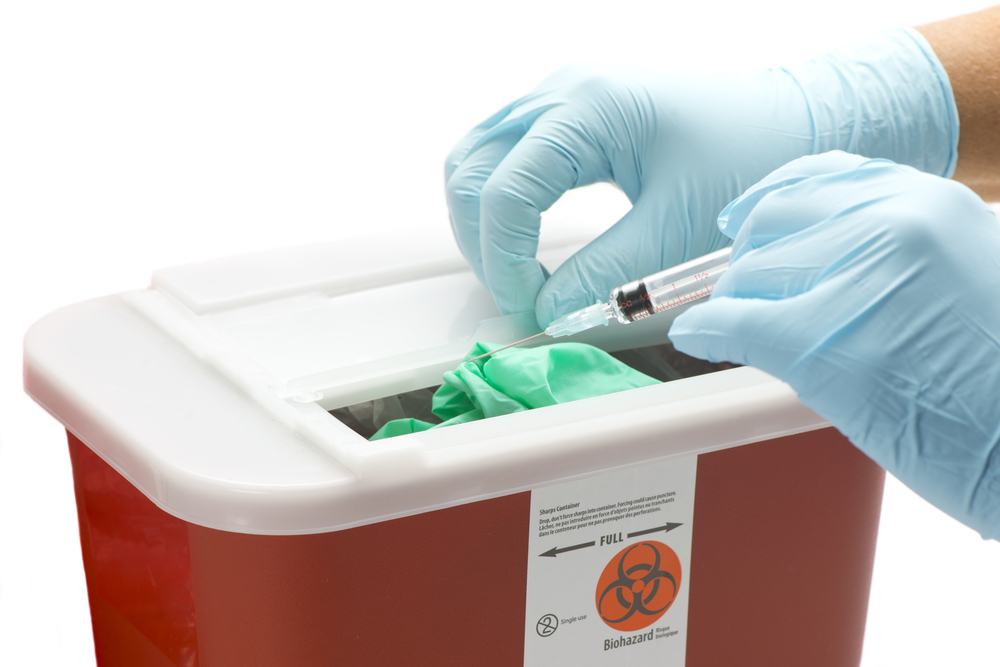Medical waste disposal companies must comply with state laws. Unlike other industries, medical waste is not federally regulated. Medical waste disposal was regulated by the EPA from the inception of the Medical Waste Tracking Act (MWTA) of 1988. However, the act expired in 1991. At that time, states took over regulated medical waste disposal. Some federal agencies do have regulations for dealing with medical waste, including the Occupational Safety and Health Administration (OSHA), Centers for Disease Control (CDC) and the U.S. Food and Drug Administration (FDA). Additional agencies may also be involved with regulated medical waste disposal. However, in most cases, the states regulate medical waste disposal.
What is Medical Waste?
Medical waste is usually found in the healthcare industry and includes anything that could be contaminated by body fluids, blood and other materials that may be infectious. While most medical waste comes from physician’s offices, hospitals, blood banks, dental practices, medical research facilities and laboratories, and veterinary clinics/hospitals, an individual may have medical waste. Those who use needles (sharps) for diabetes or other injections have medical waste.
Treatment of Medical Waste
In any medical facility, you’ll find two main types of medical waste: Sharps and other medical waste that may be infectious. When you throw needles away, they may prick solid waste workers, janitors and others who eventually handle the trash. In addition to being injured by the needle itself, workers may be exposed to infection. This includes syringes, needles and other sharps used in medical facilities.
Other medical waste may include disposable pads, soiled clothing that can no longer be cleaned, paper gowns and other waste created by medical facilities. Prior to 1997, over 90 percent of this waste was incinerated, and it was potentially infectious. The EPA created regulations because of concerns about air quality where medical waste was incinerated. As of May 2013, the EPA still reviewed and revised the Hospital Medical Infectious Waste Incinerator standards.
Alternative treatment of medical waste includes:
- Autoclaving or another form of steam sterilization;
- Thermal treatment, including microwave technologies;
- Chemical mechanical systems; and
- Electropyrolysis.
Because of the strict standards the EPA puts on incinerating medical waste, incinerators have declined. In fact, North Carolina requires that medical waste be sterilized in one manner or another prior to incinerating or dumping in a landfill.
North Carolina Laws for Medical Waste Disposal
15A NCAC 13B .1203 outlines the requirements for regulating the state’s medical waste. Regardless of the type of medical waste, it must be treated before it may be disposed of in any manner. Body fluids and blood may be incinerated if they are in individual containers that contain more than 20 ml of fluids. They may also be placed in sanitary sewage systems as long as the disposing facility notifies the sewage treatment authority.
If the waste is microbiological in nature, it must receive microwave treatment, steam sterilization, chemical treatment or incineration. Once the medical waste has been treated, then it may be disposed of as directed by 15A NCAC 13B .0100 – .0700.
Regulated medical waste has more stringent rules. Medical waste needs to be packaged in a plastic bag that is placed in a rigid container, whether a fiberboard box, drum or other rigid containers that don’t allow leakage. The plastic has to be strong enough so that it doesn’t rip, tear or burst. Medical waste must be labeled with the facility’s name, address and phone number plus the transporter’s name, address and phone number in addition to other information. The generating facility needs to keep records of the waste for at least three years.
Contact MedWaste Service
Contact MedWaste Service to discuss your medical waste needs. MedWaste Service is designed to save your facility money.

